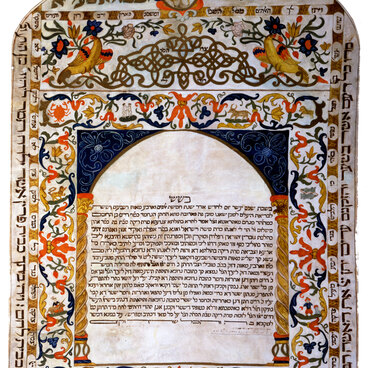Hanukkah is an ancient Jewish festival of lights that is more than 2,000 years old. In the second century BC, ancient Israel was invaded by Greco-Syrian armies. King Antiochus IV Epiphanes outlawed all Jewish traditions, festivals, and Torah reading. The Jews of the Maccabee family rebelled and were able to defeat the invading armies. By this time the Temple of Jerusalem, the center of Jewish religious life for 10,000 years, had been desecrated. The services in it were interrupted for three years, and all the valuable utensils were taken away.
The Maccabees cleansed the Temple and found the last container of ritual oil sealed by the high priest. This amount was supposed to be enough for only one day of worship, but it would take eight days to make new oil and consecrate the entire Temple. A miracle happened: the menorah with the oil burned for eight days, and in memory of this happy event, the Jews celebrate the eight-day Hanukkah every year.
“Hanukkah” translates as “dedication, renewal”, and is also called the “Festival of Lights”. Every winter the Jews light up candles to celebrate the victory of light and purity, the triumph of faith and the power of the spirit. Hanukkah glorifies the miracle of the Temple in Jerusalem and the courage of the Maccabees who liberated their people. Traditionally, one candle is lit on the first day of Hanukkah, another candle on the second day, and so on until all eight lights are lit on the last night.
Hanukkiah is a ceremonial luminary, an indispensable attribute of the festival. In the past it consisted of eight containers of oil and wicks, but now they are replaced by candles. Hanukkiahs are placed in synagogues and in homes, traditionally on window sills, to “publicize the miracle”. In ancient times, hanukkiahs were taken outside and placed near the front door. Today, the luminaries can be placed on a table or hung on a wall.
Hanukkiahs come in a variety of materials and sizes. From massive candelabras to tiny boxes, their form has been influenced by all the styles the Jewish diaspora has known for 2,000 years. The main requirement was that all the eight lights were to burn separately and not merge into a common flame. The luminaries were made of silver, bronze, pottery, stone, pewter, clay and marble. Hanukkiahs were decorated with traditional symbols of Judaism: the Star of David, the temple menorah, figures of lions, eagles and cherubim.
The Maccabees cleansed the Temple and found the last container of ritual oil sealed by the high priest. This amount was supposed to be enough for only one day of worship, but it would take eight days to make new oil and consecrate the entire Temple. A miracle happened: the menorah with the oil burned for eight days, and in memory of this happy event, the Jews celebrate the eight-day Hanukkah every year.
“Hanukkah” translates as “dedication, renewal”, and is also called the “Festival of Lights”. Every winter the Jews light up candles to celebrate the victory of light and purity, the triumph of faith and the power of the spirit. Hanukkah glorifies the miracle of the Temple in Jerusalem and the courage of the Maccabees who liberated their people. Traditionally, one candle is lit on the first day of Hanukkah, another candle on the second day, and so on until all eight lights are lit on the last night.
Hanukkiah is a ceremonial luminary, an indispensable attribute of the festival. In the past it consisted of eight containers of oil and wicks, but now they are replaced by candles. Hanukkiahs are placed in synagogues and in homes, traditionally on window sills, to “publicize the miracle”. In ancient times, hanukkiahs were taken outside and placed near the front door. Today, the luminaries can be placed on a table or hung on a wall.
Hanukkiahs come in a variety of materials and sizes. From massive candelabras to tiny boxes, their form has been influenced by all the styles the Jewish diaspora has known for 2,000 years. The main requirement was that all the eight lights were to burn separately and not merge into a common flame. The luminaries were made of silver, bronze, pottery, stone, pewter, clay and marble. Hanukkiahs were decorated with traditional symbols of Judaism: the Star of David, the temple menorah, figures of lions, eagles and cherubim.



